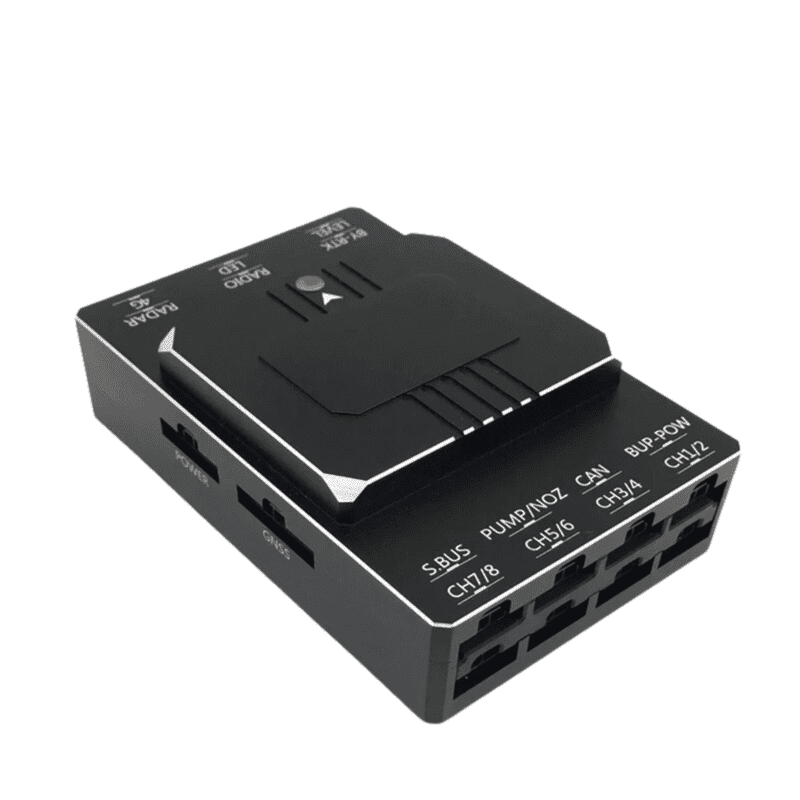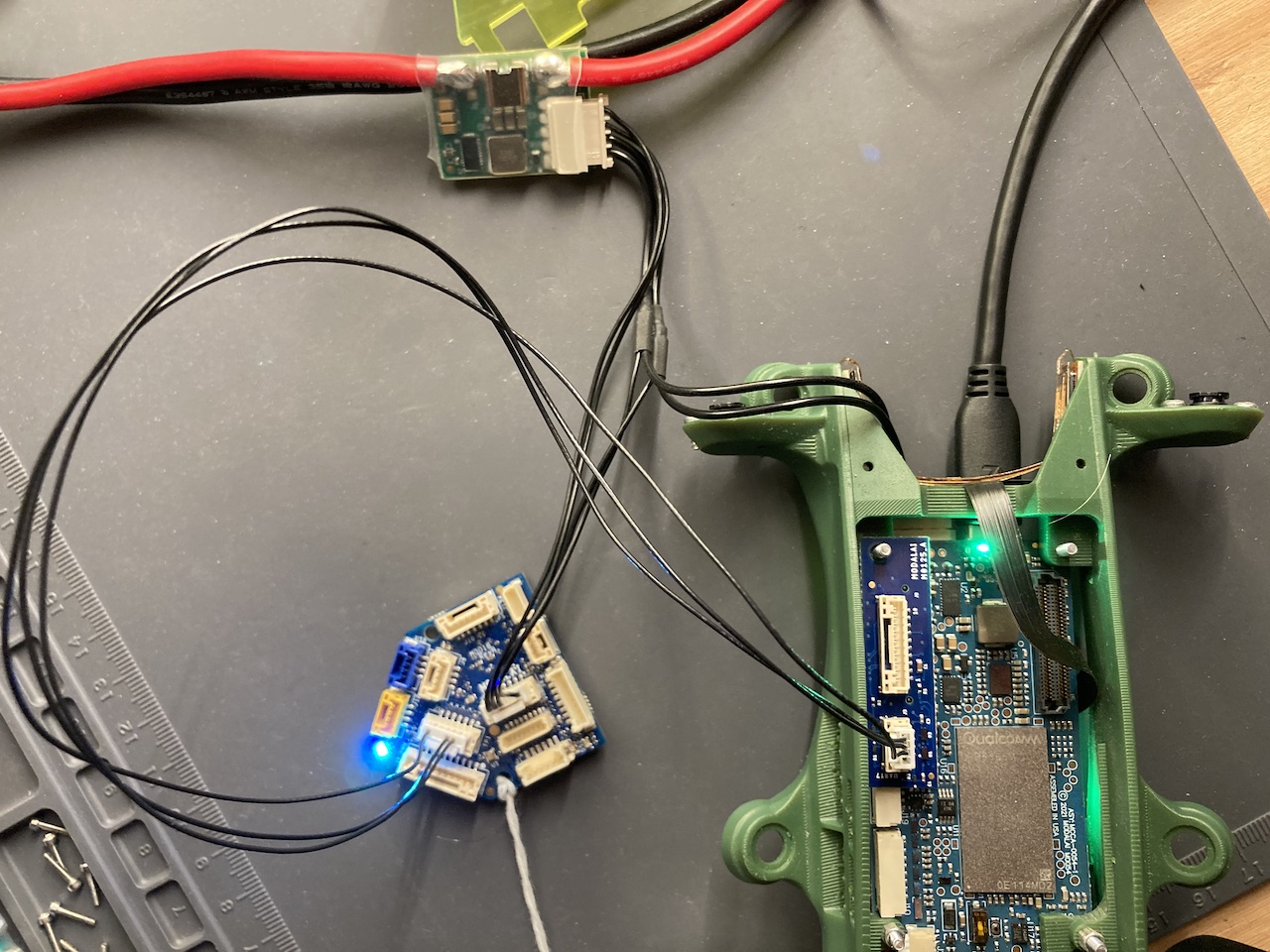SparkNavi Drone Flight Controller and GNSS/INS Made in Taiwan: Precision Navigating for Drones
SparkNavi Drone Flight Controller and GNSS/INS Made in Taiwan: Precision Navigating for Drones
Blog Article
Recognizing the Important Functions and Features of a Drone Trip Controller for Optimum Airborne Efficiency
The flight controller functions as the essential element in a drone's architecture, coordinating its activities and making certain stability via a sophisticated interplay of information and sensing units handling. Recognizing the vital features and features of these controllers is crucial for making best use of aerial performance, as they determine not just navigational accuracy yet also general security and dependability. With improvements in innovation, the landscape of flight controllers is quickly advancing, motivating a closer assessment of what really defines ideal capability in this essential system. What effects do these developments hold for both enthusiasts and specialists in the area?
Summary of Trip Controllers
When exploring the globe of drone innovation, understanding flight controllers is necessary for both hobbyists and experts alike. Trip controllers offer as the brain of the drone, managing its activities and making certain stability throughout flight (SparkNavi drone flight controller and GNSS/INS made in taiwan). They refine information from various sensors, including accelerometers, barometers, and gyroscopes, to keep balance and reply to pilot inputs successfully
The design of flight controllers can vary dramatically, varying from basic variations designed for entry-level drones to sophisticated systems outfitted with advanced features for expert applications. The assimilation of GPS abilities makes it possible for specific navigating and positioning, while programmable firmware enables individuals to personalize trip attributes to fit their particular demands.
Additionally, trip controllers are essential in helping with interaction between the drone and the push-button control, making it possible for real-time changes and telemetry information transmission. Understanding the various kinds of trip controllers, including multi-rotor, fixed-wing, and crossbreed systems, is crucial for selecting the appropriate design for a given application. Inevitably, a comprehensive grasp of flight controllers not just boosts the flying experience yet also optimizes the performance and security of drone operations.
Key Features of Trip Controllers
Flight controllers play a pivotal role in handling a drone's flight characteristics by performing numerous essential functions that make sure stability and responsiveness. Among the main functions is the stablizing of the drone's orientation and altitude. This is achieved via the combination of various sensing units, consisting of accelerometers, gyroscopes, and barometers, which continuously check the drone's placement and activity.
.jpg)
One more vital function is the processing of control inputs from the pilot or self-governing systems. The flight controller analyzes these inputs and changes the drone's electric motor speeds appropriately to attain the wanted flight course. This consists of handling roll, pitch, and yaw, which are critical for maneuverability.
Additionally, flight controllers are furnished with sure devices. These features are made to react to vital scenarios, such as reduced battery degrees or loss of signal, by launching predefined activities like returning to the launch factor or hovering in location.

Crucial Attributes to Consider
Numerous vital attributes ought to be taken into consideration when picking a drone trip controller to make sure ideal performance and integrity. One crucial aspect is the controller's processing power, which determines its capability to manage complicated flight formulas and real-time information processing. A greater handling ability enhances responsiveness and security throughout flight.
One more essential feature is the variety of supported trip modes. A functional flight controller should offer numerous settings, consisting of acro, elevation hold, and GPS-assisted modes, accommodating different pilot ability levels and functional situations. Furthermore, the existence of built-in safety and security attributes, such as fail-safes and geofencing, can substantially enhance functional safety.
Compatibility with numerous interaction protocols is also vital, as it makes sure smooth integration with various other tools and peripherals, such as remote controllers and telemetry systems. In addition, the controller's firmware must be easy to use and on a regular basis upgraded to incorporate new functions and optimizations.
Assimilation With Sensors and Systems
A flight controller's performance is greatly affected by its ability to integrate with numerous sensing units and systems. This assimilation is crucial as it allows the flight controller to get real-time information required for effective trip management. Trick sensors consist of GPS, inertial measurement systems (IMUs), measures, and magnetometers, each offering important information relating to the drone's positioning, position, and altitude.

Additionally, progressed flight controllers sustain integration with payload systems, consisting of electronic cameras and various other sensing units, enabling enhanced performances such as autonomous navigation and barrier avoidance. This interconnectedness not just boosts the drone's functional capacities but also broadens its application possible across different industries, from aerial digital photography to agricultural tracking. Thus, a well-integrated flight controller is basic for achieving optimum aerial performance and making certain the dependability of drone procedures.
Tips for Optimizing Performance
To maximize the efficiency of your drone, a number of key strategies can be utilized that focus on maximizing both hardware and software parts. Guarantee that the flight controller firmware is up to date. Producers often launch updates that enhance stability, boost capability, and repair insects. Regularly looking Look At This for these updates can substantially affect your drone's performance.
Appropriate calibration decreases drift and boosts flight stability, specifically during complicated maneuvers. High-grade propellers can reduce drag and increase trip time.
Fine-tune your flight setups, consisting of PID (Symmetrical, Important, Derivative) values, to achieve smooth and responsive handling. By applying these approaches, drone drivers can substantially enhance aerial efficiency, leading to a much more enjoyable and effective flying experience.
Conclusion
In final thought, an extensive understanding of drone flight controllers is important for enhancing aerial performance. By focusing on these components, operators can substantially elevate the performance and dependability of their drone systems in diverse applications.
Flight controllers serve as the mind of the drone, orchestrating its motions and making sure security during flight.Trip controllers play a critical duty in taking care of a drone's flight dynamics by carrying out numerous key functions that make sure security and responsiveness. The trip controller interprets these inputs and adjusts the drone's motor rates as necessary to attain the desired flight path.Various necessary attributes should be taken right into account when choosing a drone trip controller to make sure optimal performance and integrity. Therefore, a well-integrated flight controller is fundamental for attaining optimum aerial efficiency and making certain Read More Here the dependability of drone procedures.
Report this page